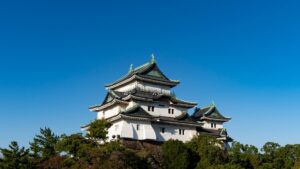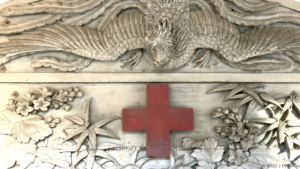Hikone Castle, The life of Ii Naomasa, a Brave Warrior with Strong Diplomatic Skills
Hikone Castle, situated atop Mount Kinko along the shore of Lake Biwa, retains its stunning three-story structure, adorned with its white stucco exterior walls as it was in the past. The castle tower, a national treasure, showcases an elegant and rhythmical architectural style adorned with three types of gables: Kirizuma, Kara-hafu, and Iriomoya. Adding to its charm, Katomado windows grace the second and third floors. Meanwhile, the Genkyu-en Garden, crafted under the fourth lord of the Hikone domain, offers a magnificent panorama of its landscape. This Chisen Kaiyu-style garden, known as a Zen-style landscape garden, frames the castle tower majestically in its backdrop, accentuating its beauty.
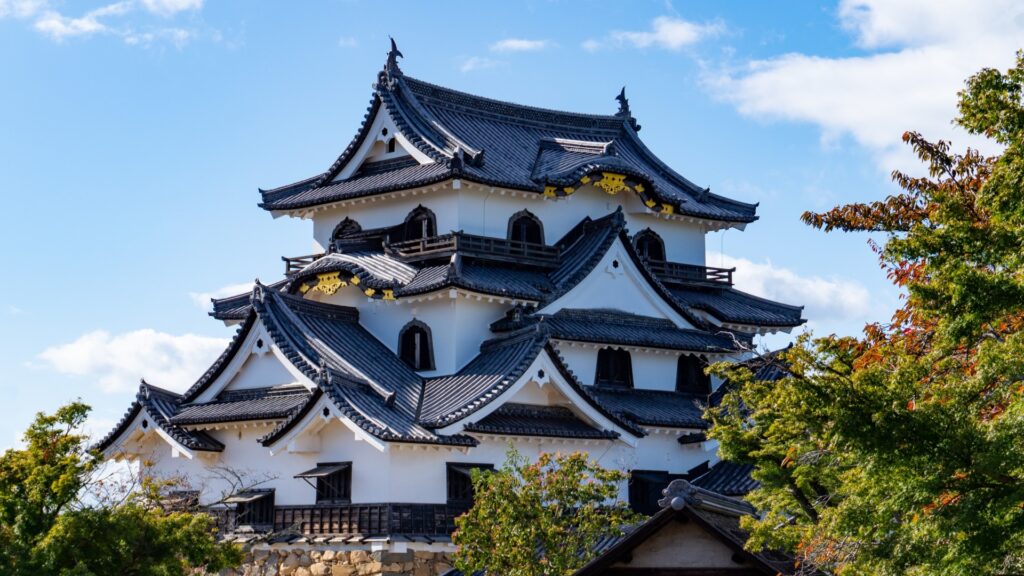
Despite the victory of Tokugawa Ieyasu (1543-1616, 徳川家康) at the Battle of Sekigahara against Ishida Mitsunari, a loyal vassal of Toyotomi Hideyoshi (1537-1598, 豊臣秀吉), in 1600, centered on Osaka Castle, Toyotomi's influence could not yet be underestimated. In this situation, Ii Naomasa (1561-1602, 井伊直政) was entrusted with Sawayama Castle, Mitsunari’s former residence, as the first lord of the Hikone Domain. Positioned strategically as a vital transportation hub connecting eastern and northern regions, and also the entrance of Kyoto and Osaka, the castle held immense significance. Naomasa looked for a place where he could build a castle town for his vassals and townspeople, befitting the new era, and prompted plans for a new Hikone Castle approximately 6 km to the west. Tragically, due to illness, Naomasa passed away before witnessing the project’s completion. Amidst military tensions, Hikone Castle was built in 1604 under the shogunate’s control, known as Tenka-Bushin. Supported by 12 feudal lords hailing from 7 regions surrounding Hikone, the construction was completed in a notably abbreviated span of three years, half of the usual duration by utilizing materials sourced from other castles.
Ii Naomasa, a scion of a distinguished family, served Ieyasu
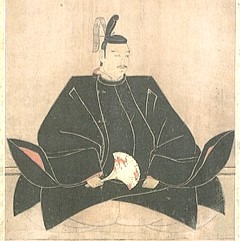
(@ wikimedia commons)
On May 19, 1560, Oda Nobunaga (1534-1582, 織田信長), an emerging power in Owari, won a remarkable victory at the Battle of Okehazama. Leading a mere 4,000 soldiers, Nobunaga defeated Imagawa Yoshimoto’s formidable army, which numbered 25,000. Amidst this event, Ii Naomori, the head of the Ii family serving Imagawa Yoshimoto, his death in battle, leaving behind an heir, Toramatsu (later known as Naomasa). Naomasa was entrusted to the care of a temple for his upbringing. In 1575, the turning point of Naomasa's life arrived by serving Ieyasu at the age of 15. 1575 was the year of the Battle of Nagashino & Shitaragahara, a significant moment where Oda and Tokugawa allies drove the Takeda clan in the Kai region (Yamanashi) to the brink of collapse and when Nobunaga's unification of Japan became a reality.
Felt the critical need not only for military power but also for negotiating ability at such a turning point in time, Ieyasu recognized Naomasa's inherent ability and trained him as a close apprentice. In addition, Ieyasu found meaning in that Naomasa's ancestor was a prestigious warrior family. The origin of the Ii family was linked to the Fujiwara clan that dominated the centers of power in the mid-Heian period (794-1185). The Ii family also served Minamoto Yoritomo (1147-1199, 源頼朝), who established the first samurai government in Kamakura. The Ii family had a history of more than 1,000 years and its status was higher than that of the Tokugawa family, which had its origins in Mikawa, and it was respected by the warriors of Kanto as well. Later, Naomasa became the four generals serving Tokugawa Ieyasu despite of the sole outsider.
Naomasa demonstrated his ability to meet Ieyasu's expectations

In 1582, seven years after Naomasa began his education under Ieyasu, Nobunaga was killed by Akechi Mitsuhide in the surprising Honnoji Incident. Consequently, severe battles erupted involving Tokugawa Ieyasu, Uesugi clan of Echigo (Niigata), and Hojo clan of Sagami (Kanagawa) vying for control over the Kai, Shinano, and Ueno regions, previously Nobunaga’s rule. The standoff between the Tokugawa and Hojo persisted, and Naomasa, a mere 22-year-old and an unknown figure was chosen to negotiate peace. Ieyasu’s choice of Naomasa stemmed from his exceptional diplomatic skills. The Imagawa clan, to which the Ii family served, had an alliance with the Hojo clan previously. Based on this historical connection and Naomasa as the head of the Ii family, the Hojo clan welcomed Naomasa as a negotiator. Naomasa's adept negotiating skills have continuously played a pivotal role in Ieyasu's efforts toward the nation's unification since then.
Ii forces in red arms played an active role in the Battle of Komaki and Nagakute
Toyotomi Hideyoshi fought against Tokugawa Ieyasu in 1584 at Komaki and Nagakute, seeking to subdue him by force. Hideyoshi forces consisted of nearly 10 times as many soldiers as that of Tokugawa. Active in this battle was the Ii force led by Naomasa, who was in his first battle. Naomasa commanded the former Takeda clan’s strongest forces in the Warring States period, which was incorporated into the Ii forces. Positioned himself at the front line, Naomasa initiated the battle by shooting a gun, struck the enemy, and secured victory in the battle that spanned two to three hours. The Ii forces fought bravely on the battlefield adorning themselves in a complete array of red attire - from armor to battle coats and harnesses - by the erstwhile Takeda army.
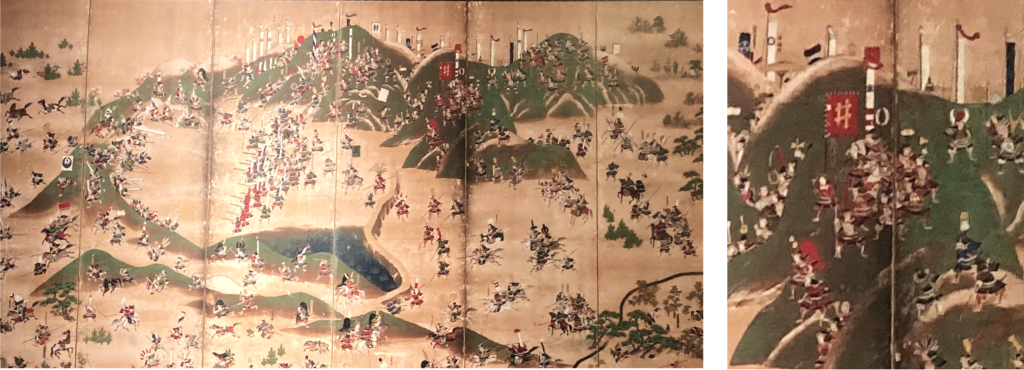
Hideyoshi tried every trick in the book for Ieyasu's coming to Kyoto
Following his inability to secure victory at the Battle of Komaki and Nagakute, Hideyoshi opted against using force against Ieyasu. Instead, he made his sister marry Ieyasu, but Ieyasu did not go to Kyoto. Hideyoshi then came up with an unusual strategy proposing: "I will provide my mother as a hostage, and in return, you must come to Kyoto." Ieyasu consented to this request. During Ieyasu’s absence, Naomasa extended gestures of goodwill by presenting fruits and confections to Hideyoshi's mother, who was held hostage at Okazaki Castle. Essentially, Naomasa treated her as a guest of his lord. Hideyoshi later expressed gratitude to Naomasa for his considerate treatment. Naomasa's concern for her and her attendants as hostages, who were in fear that they might be killed, played an important role in mitigating their apprehensions towards the Tokugawa. This display likely stemmed from Naomasa's innate ability to act for the benefit of Ieyasu.
Naomasa's diplomatic skills brought victory to the Tokugawa forces at the Battle of Sekigahara
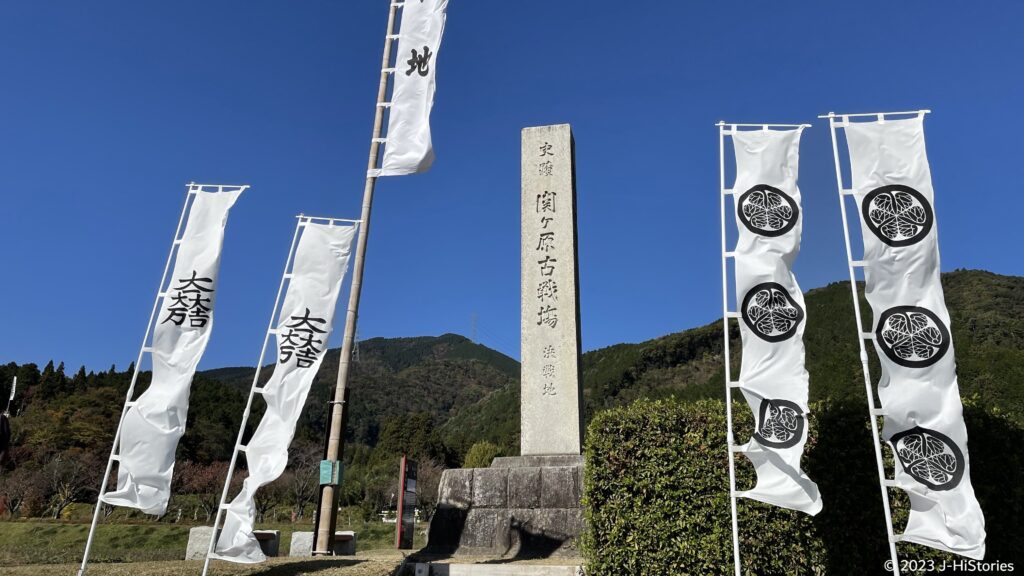
After Hideyoshi died in 1598, tensions escalated between Ieyasu and Ishida Mitsunari, Hideyoshi's chief vassal. Two years later, in 1600, the two armies clashed at Sekigahara. The decisive factor in their victory was how many warlords they were able to recruit to their side during these two years. Although the battle that divided Japan in two ended in Ieyasu's victory, much credit went to Toyotomi's top generals. They fought for the Tokugawa army because of their strong aversion to Mitsuhide. How did Naomasa persuade these brave Toyotomi commanders to join Ieyasu's cause?
Turning back the clock to one year and nine months before the Battle of Sekigahara, just four months after Hideyoshi's passing, Ieyasu had already taken proactive steps in anticipation of realizing a peaceful post-Hideyoshi era. He tasked Naomasa to negotiate for Toyotomi generals to conclude an alliance with the Tokugawa. His counterpart was Kuroda Nagamasa (1568-1623, 黒田長政), the son of Hideyoshi's military strategist, Kuroda Josui (1546-1604, 黒田如水). Discussions began after the exchange of Kishomon, a sworn oath, between the two sides, describing honesty and confidentiality. As a result, Naomasa succeeded in attracting Hideyoshi's brave generals, such as Fukushima Masanori and Kato Kiyomasa, to join the Tokugawa faction. Additionally, they managed to force the Mori clan, who had been promoted as generals in the Toyotomi camp, to refrain from entering the battlefield.
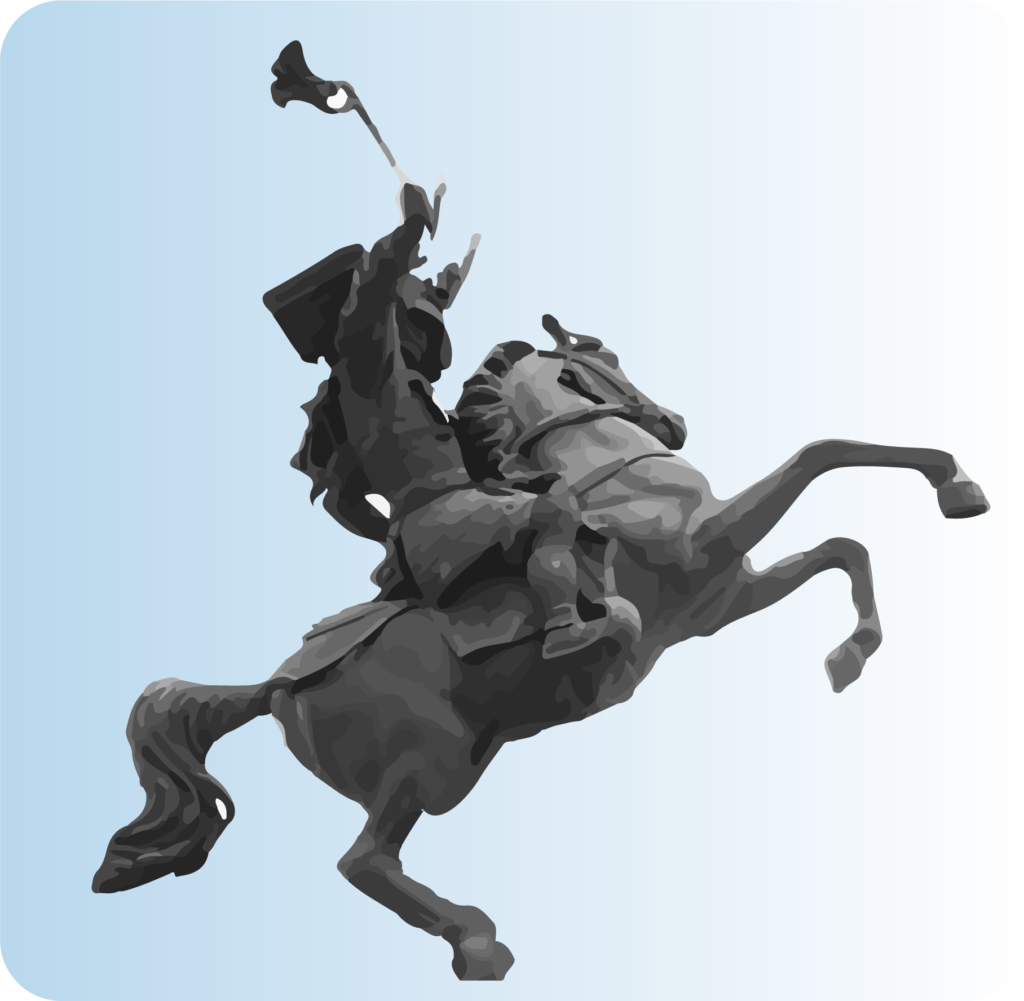
Then, around 8:00 a.m. on October 21, 1600, a shot fired by the Ii forces set off the fire of a decisive battle. Following several hours of fierce battles, the Shimazu forces from Kagoshima, part of the Western army, recognized their impending defeat and attempted to break through the headquarters. However, their path was blocked by Ii Naomasa and the formidable general Honda Tadakatsu. Despite successfully defeating some warriors, Naomasa was shot and wounded the moment he came within sight of Shimazu Yoshihiro (1535-1619, 島津義弘), the general of the Shimazu domain army, and missed him. Thus, the battle ended in victory for the Tokugawa forces.
What Naomasa left behind
Naomasa, who had been prone to illness even before the Battle of Sekigahara, sustained a gunshot wound but managed subsequent military campaigns, post-war negotiations, and strenuous duties. However, he died in 1602 at the young age of 42. Before his demise, he imparted wisdom to his two sons, "You cannot know in advance whether you will succeed or fail, whether you will be wise or foolish. That is why we have no choice but to act with all our might.” Even after Naomasa's death, the Hikone domain continued to receive support from the shogunate. It produced five Tairos, the highest ranks of Tokugawa administrations, and steadfastly backed the shogunate for 260 years. This legacy stems from the first generation of the clan to repay Ieyasu for providing Naomasa a place to grow and flourish after adversity, a sentiment perpetuated across generations. The role of Tairo, Ii Naosuke (1815-1860, 井伊直弼), a descendant of Naomasa, assessed the situation at the end of the Tokugawa Shogunate and brought about a major shift in foreign policy from isolationism to openness, which may have been an indication of his role as shogun’s political affairs following Naomasa's tenure.
Interviewed Hiroko Noda (Part-Time Lecturer at Ritsumeikan University)
Ii Naomasa Timeline
| Naomasa | Ieyasu | ||
| 1561 | Ii Naomasa was born | Age=1 | 20 |
| 1562 | Ii Naoamasa's father died | 2 | |
| 1575 | Ii Naomasa started to serve Ieyasu | - | 34 |
| 1582 | Nobunaga was killed at Honnoji by Akechi Mitsuhide | 22 | 41 |
| 1582 | Ii Namasa was chosen to negotiate peace with the Hojo clan | 22 | |
| 1582 | Ii Naomasa started to command the former Takeda clan’s forces | 22 | |
| 1584 | Komaki-Nagakute battle between Hideyoshi and Ieyasu | 24 | |
| 1586 | Ii Naomasa treated Hideyoshi's mother as a guest of his lord | 26 | |
| 1590 | Hideyoshi unified the nation | 30 | 49 |
| 1590 | Ieyasu moved to Edo according to Hideyoshi's order | 30 | 49 |
| 1598 | Hideyoshi passed away | 38 | 57 |
| 1598 | Ii Naomasa started the negotiation with Kuroda Nagamasa | 38 | |
| 1600 | Tokugawa Ieyasu defeated Ishida Mitsunari, Hideyoshi's right arm at the battle of Sekigahara | 40 | 59 |
| 1601 | Naomasa entered Sawayama Castle | 41 | |
| 1602 | Ii Naomasa passed away | 42 | |
| 1603 | Tokugawa Ieyasu established Tokugawa Shogunate at Edo | - | 62 |
Recommendations to visit
- Access: 30 minutes from Nagoya or 40 minutes from Shin-Osaka via Shinkansen to Maibara station. Then 15 minutes on the JR Biwako line and get off at Hikone Station. A 15-minute walk.

